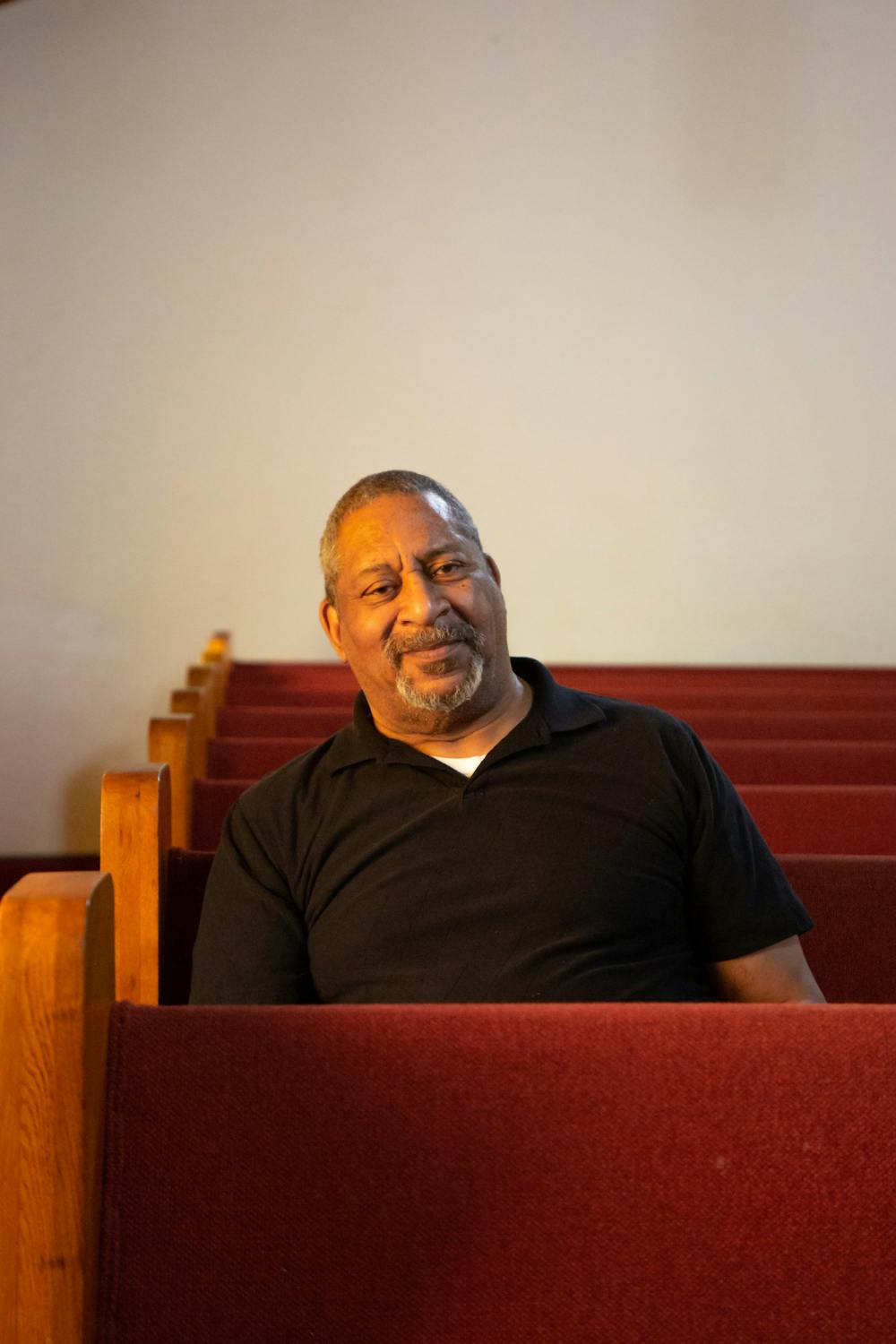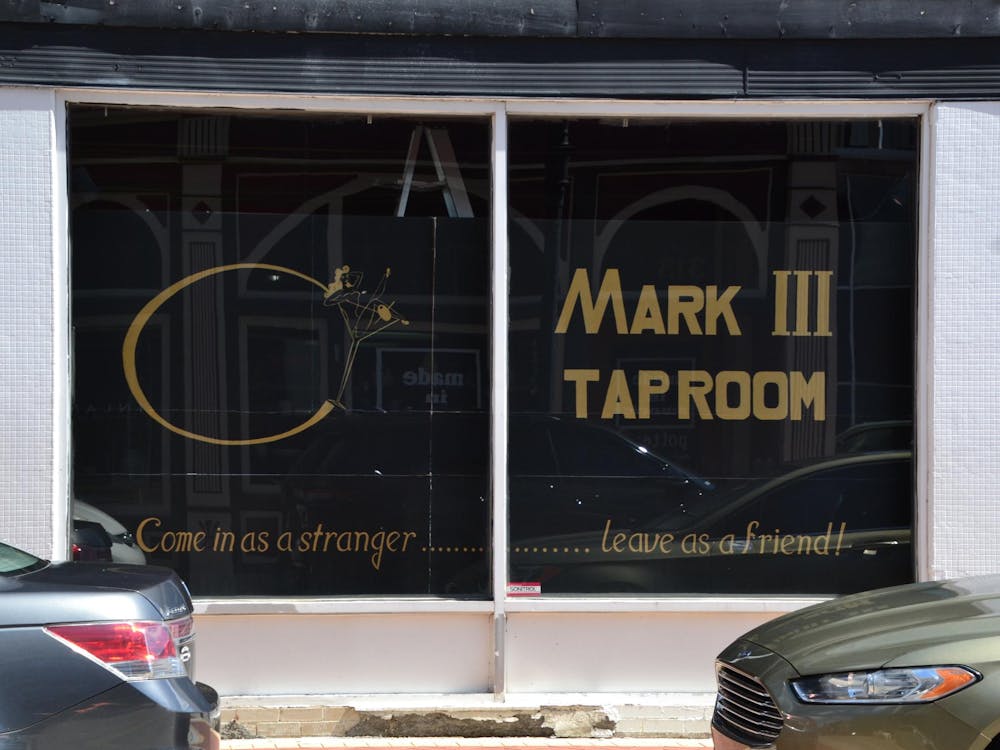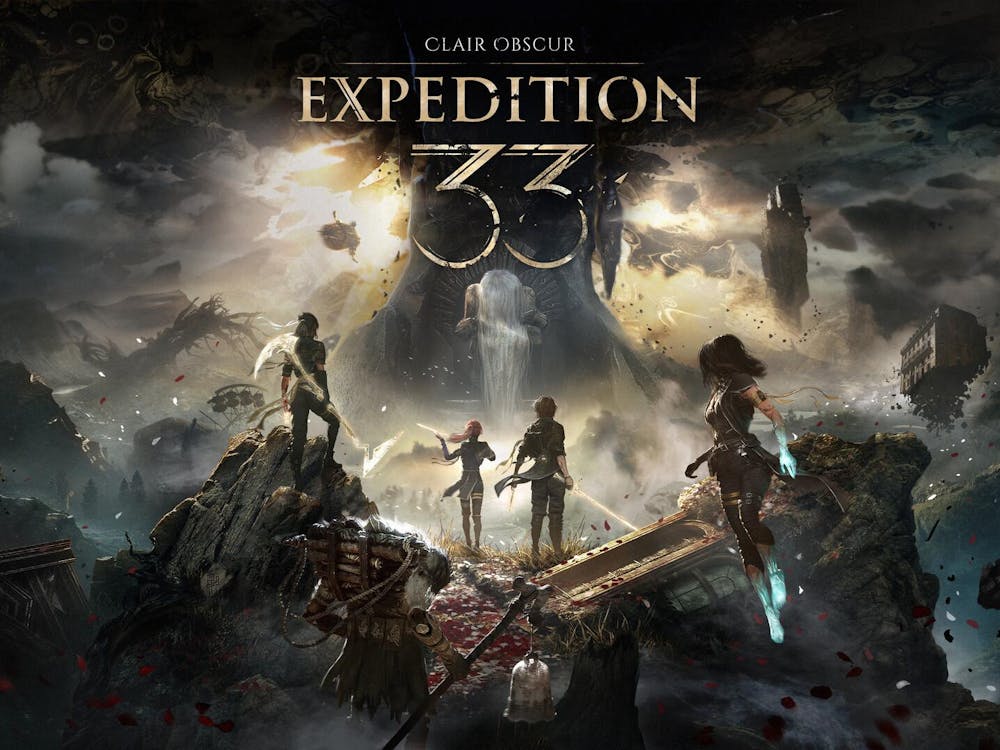The red carpeted staircase in the Bethel African Methodist Episcopal (AME) Church in Muncie, Indiana, leads to a collection of artifacts that tell the story of the church.
The downstairs area is called the Julia Bass Fellowship Hall, named after a member of the church who served as a missionary and was a mother of the church.
“Mothers of the church would lead young women and guide them on how to be involved in the church,” Ed Faulkner Jr. said.
Faulkner has been a lifelong member of the Bethel AME Church; his father, Ed Faulkner Sr., was a trustee at the church.
The Fellowship Hall contains other snapshots of history, such as photographs of the groundbreaking ceremony of the current church in 1979 and a Bible dated July 11, 1926, with signatures of the members of the church inside.
Looking through the many photos in the Fellowship Hall, Faulkner Jr. sees photos of children who were in Sunday school at the church. He said he is in some of the photos, one of which is dated April 18, 1954.
Behind those Sunday school photos is a board listing some of the ministers of the Bethel AME Church and how the church was formed. The African Methodist Episcopal Church holds the motto of “God Our Father, Christ Our Redeemer, the Holy Spirit Our Comforter, Humankind Our Family.” The church nestled on East Jackson Street is the oldest Black church in Muncie and in Delaware County, celebrating its 155th anniversary in 2023.
The church was founded in 1868 when 12 people met inside the home of Maria Scott Artist to form the African Methodist Episcopal Church. For the first few years, services of this church were held inside the Artist church. In 1872, a plot of land between Jackson and Beacon Streets was purchased, and the church still occupies this land.
In 1892, the parsonage and a permanent building were built to replace the log cabin on the site. These buildings are immortalized in photos found in the Fellowship Hall, including a picture taken on July 24, 1921, celebrating the 50th anniversary of the land on Jackson and Beacon being published. This building stood until the new building was built and opened in 1980. The land where the current building is used to be the parking lot for the previous church building.
“It had simply served its purpose,” Rev. Maurice Reed said when referring to the previous church building.

Reed is not from Muncie; he got assigned to be the pastor of the Bethel AME Church. Reed said in the AME Church, pastors are assigned to churches in their Episcopal District. Churches in Indiana are in the Fourth Episcopal District. Before coming to the Bethel AME Church, he also was the pastor in churches in Gary, Fort Wayne, Plainfield and Peru.
“The people make this [church] special,” Reed said about his time in the Bethel AME church.
Faulkner Jr. said his life, and many others in the congregation, “revolved around the church.” He remembered church programs for Easter and Christmas when he was a child.
There has always been an emphasis on providing toward those in need. Over the course of their history, members of Bethel AME volunteered at soup kitchens and jails to provide them with a “spiritual experience,” Faulkner Jr. said.
The AME church was a constant in the life of Maria Williams-Hawkins. Growing up in Memphis, both sides of her family had a deep lineage rooted in the church; her mother’s side was in the AME church for five generations, and her father’s side for four.
“My family was not one that went every Sunday,” Williams-Hawkins said. “However, I wanted to go every Sunday.”
Her allegiance with the AME church is strong enough that before she signed her contract to teach at Ball State in 1993, she located the Bethel AME church. During a conversation she had with a tour guide the first time she was in Muncie, the guide said there was “no Black community, only an integrated community.” Williams-Hawkins rebuked this suggestion.
“There is a Black community here because there is an AME church here,” Williams-Hawkins said.
Bethel AME has a shared experience with other Black churches in Muncie. Across the street from Bethel AME is the Calvary Baptist Church, the second-oldest Black church in Muncie, and across the White River is the Shaffer Chapel AME Church. Reed said the Shaffer church did not have a close relationship with the Bethel church, but some members did come to Bethel; Reed is also the pastor at the Shaffer church.
Williams-Hawkins said she hopes the two AME churches will start working together and have a closer relationship than in recent years. She said Hurley Goodall, a former member of the Indiana House of Representatives and the first Black member of the Muncie Community School Board, was originally a member of the Bethel AME Church before joining the Shaffer Chapel AME Church.
Other members of Bethel AME were also servants for the Muncie community. Handley A. Hickey, who oversaw the construction of the current church building, worked with Ball State University’s R. Wayne Estopinal College of Architecture and Planning (CAP) students to create concepts for a new building for a class project. Hickey also spoke to Ball State student organizations, including the Campus Ministry for Black Students in April 1978.
Another member of the Bethel AME church was Pennie Thomas, a member of the Board of Trustees at Ball State from 1990 until her death in 1998. Faulkner Jr. said Thomas and her husband, Harvey Thomas, were “very involved” in the Muncie community. After her death, then-President John Worthen called Pennie “a person who will do anything, go anywhere, give anything for others,” The Thomas’ donated several items to the Bethel AME Church, including an organ piano donated by Pennie.

These acts of goodwill circle back to a main point, Faulkner Jr. said: for the Black community, the church is an important gathering place. In the vestibules, there would be copies of The Muncie Times, a bi-weekly newspaper serving the Black communities of East Central Indiana.
“Even if they don’t do anything else, they go to church,” Faulkner Jr. said.
The lives and legacies of members of the Bethel AME Church are still shown in the church. On each pew, gold plates read the names of members who had died or those who had donated money towards those pews. Names of members the organ was given in memory of are listed on the organ given by Pennie. In the Julia Bass Fellowship Hall, photos of recently deceased members lie on top of a remembrance table. Faulkner Jr. said there have been a few members of the church who have lived past 100 years.
Above the remembrance table of photos of older members; one of these photos is Faulkner Sr. In February 1952, Ed Sr. founded Faulkner Mortuary, the oldest minority funeral home in East-Central Indiana. After Faulkner Sr.'s death, Faulkner Jr. took over the operations of the funeral home.
“There is no business unless we are tied to the community,” Faulkner Jr. said. “They need to have a place to go.”
When Williams-Hawkins moved to Muncie in 1993, she was given a role within the church; she was tasked to be the Sunday school teacher. She remembered how one of the church members said, “I knew God would send us our new Sunday school teacher” when she arrived. Thirty years later, she still teaches Sunday school at Bethel and is also an associate pastor.
“Anything that has to do with Christian education, I do it,” Williams-Hawkins said.
Besides their “structured” charity work, as Williams-Hawkins calls it, there are other charity work that can be spontaneous.
“There are people who will call the pastor and say they need something,” Williams-Hawkins said. “We will work on it to try and take care of the ‘real needs’ of the community. We continue to service ourselves, the little church on the side of the road.”
For Reed, this church is an important stop in his journey as a pastor; after his term at Bethel is done, he will be retiring. However, there is one project he hopes to complete before he retires.
“I want to get the carpet redone,” Reed said. “It’ll cost $10,000.”
Contact Grayson Joslin with comments at Grayson.joslin@bsu.edu or on Twitter @GraysonMJoslin.





